The digitisation of construction
09 March 2021
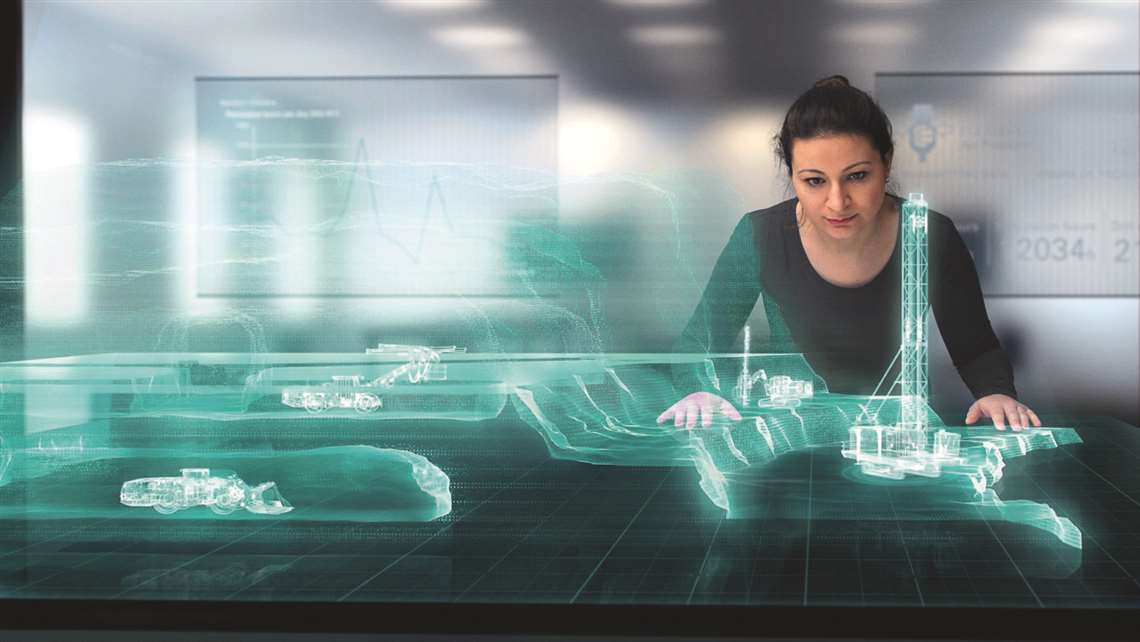 Epiroc wants to accelerate the digital transformation in all areas of their operations
Epiroc wants to accelerate the digital transformation in all areas of their operations
The pressure on the construction industry is not going away anytime soon – quite the opposite, in fact. Due to growing population growth and urbanisation (the ratio of the world’s population living in urban environments is expected to increase from 55% in 2018 to 68% by 2050) global demand for construction output is expected to rise sharply.
This increasing demand, along with projects that are getting bigger and more complex, a need for sustainable practices, and a skills shortage will all place increased pressure on the industry. One way to alleviate some of this, to turn the valve and let off some pressure, is through digitisation.
Digitalisation is a broad term that encompasses many different aspects, from a foreman on a site using a tablet to record progress to SPOT the robotic dog surveying a site to BIM, digital twins, machine control and other aspects. At its heart, though, digitisation allows for information to be spread and shared across all of those working on a project, decreasing the chances of mistakes occurring and allowing for better planning. It should enable construction to increase profit margins and finish more jobs on schedule.
Adam Box, business development manager, Topcon Positioning Group, says, “People are quickly waking up to the improvements in productivity such technology can bring, and one area where we have seen a particular uplift is construction verification.
“By using tools like BIM and construction verification software such as our ClearEdge 3D Verity, mistakes can be spotted almost instantly and rectified before they become expensive problems. Coupled with the GTL-1000 scanning robotic total station, it enables project teams to process and analyse 3D point clouds for verification analysis at every stage of the project.
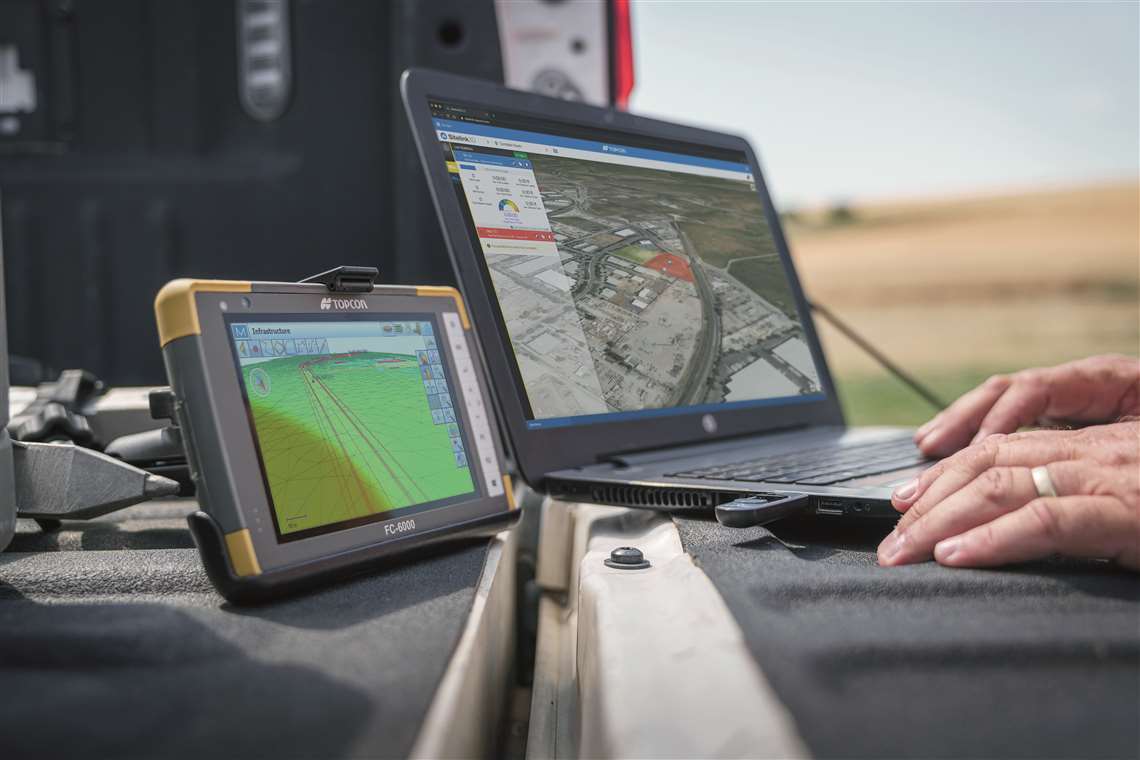 The digitisation of construction will lead to increased productivity
The digitisation of construction will lead to increased productivity
“It’s incredibly quick – you can now verify up to 99% of as-built construction accuracy in a fraction of the time it would traditionally take to spot check just 5%. Being able to account for and adapt to unexpected design variations in this way saves vast amounts of time and maximises efficiency.”
Adopting digital workflows also allows certain tasks to be ‘democratised’ – that is for people to be able to perform tasks that they wouldn’t have been able to previously. For example, technology that combines a robotic total station and a scanner means that a specialist surveyor may no longer be needed.
Digital twins
One aspect of the digitalisation of construction – possibly at this moment in time the ultimate expression of it – is digital twins. There are different definitions of exactly what a digital twin is, but in essence, it is a digital representation of a physical thing. However, it is much more than this.
Frank Weiss, senior director, product management at Oracle, says that, “For the built asset industry, digital twins can play a profound role in how owners manage built assets and how consumers interact with – in many cases, live and work in – such structures now and into the future.
“Ideally, today digital twins would be created in parallel with their physical counterparts throughout the planning, design, and construction phases of a project, or after the project has progressed by scanning the asset. An important aspect of a digital twin is the two-way connection between the digital and physical asset through shared data.”
The reason why digital twins might, in 2021, be the ultimate expression of the digitisation of the industry is that they simply wouldn’t have been possible until fairly recently. To exist, they need to make use of the technology that is slowly but surely starting to permeate the industry.
Rich Humphrey, VP of Construction Products, Bentley Systems, explains this concept, saying, “The digital twin for construction is essentially a Live 4D/BIM model that is connected to real-time data for the job site. It is made possible because of the advancement and convergence of several technologies including the ubiquity of mobile devices, drones, and reality capture on the jobsite, and the emergence of artificial intelligence, machine learning, and the Internet of Things, sensors, and mixed reality.
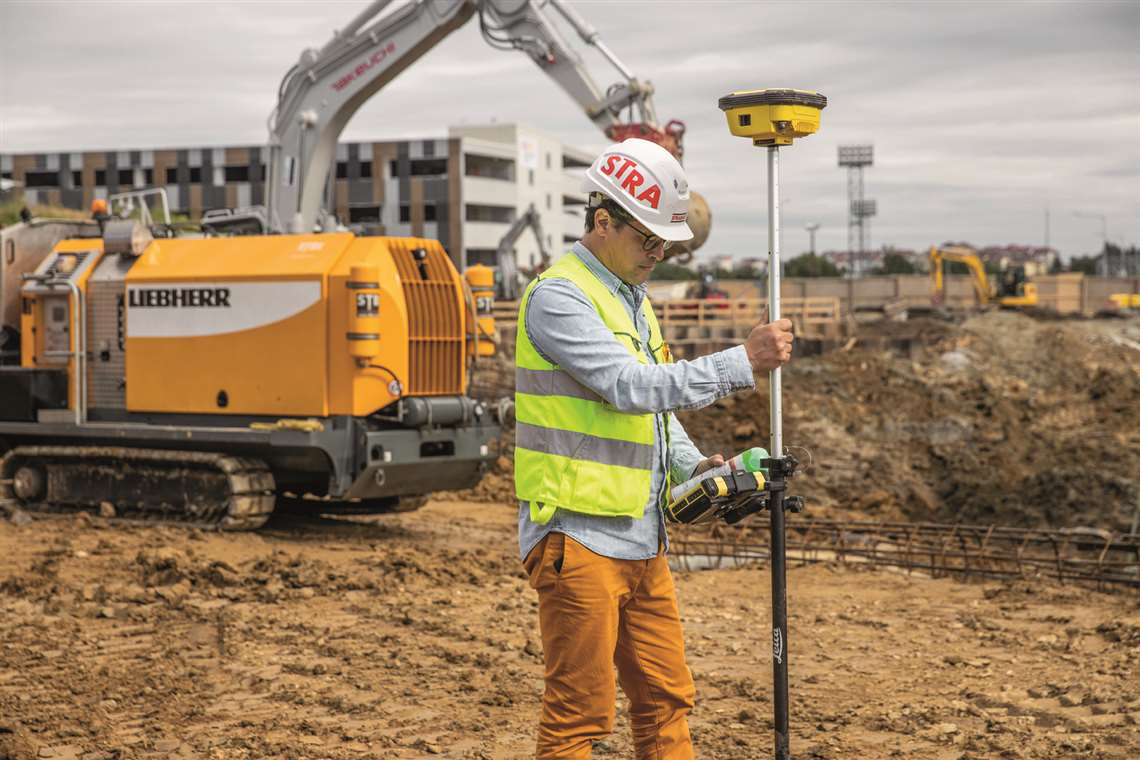 Drilling is another aspect of construction that is being digitised
Drilling is another aspect of construction that is being digitised
“In connection with a 4D model, these technologies are enabling the delivery of the construction project digital twin. For construction, it represents a continuation of the industry’s evolution to digital workflows and the use of design and construction data to improve project delivery that started with 2D CAD, the automation of digital forms, and now includes 3D/4D models or BIM.”
Digital twins use all this technology to produce what is effectively a ‘live model’ that is updated as work progresses on the actual job site. They can provide analysis and insights that help a project to be completed more efficiently and also, once built, to run more efficiently.
Construction’s digital transformation
The majority of the leading OEMs in construction are embracing the digitalisation of the industry, such as Epiroc. The Swedish-based company has stated that it wants to keep its customers at the technical forefront and accelerate the digital transformation in all fields of their operations.
Helena Hedblom, President and CEO of Epiroc, says that, “Automation, digitalisation and electrification are transforming mining into a much safer, more sustainable and profitable business. The construction industry, all the way from tunnelling and infrastructure to demolition and recycling, is moving in the same direction and we want to make sure our customers have access to the right solutions that truly meet their current and future needs.”
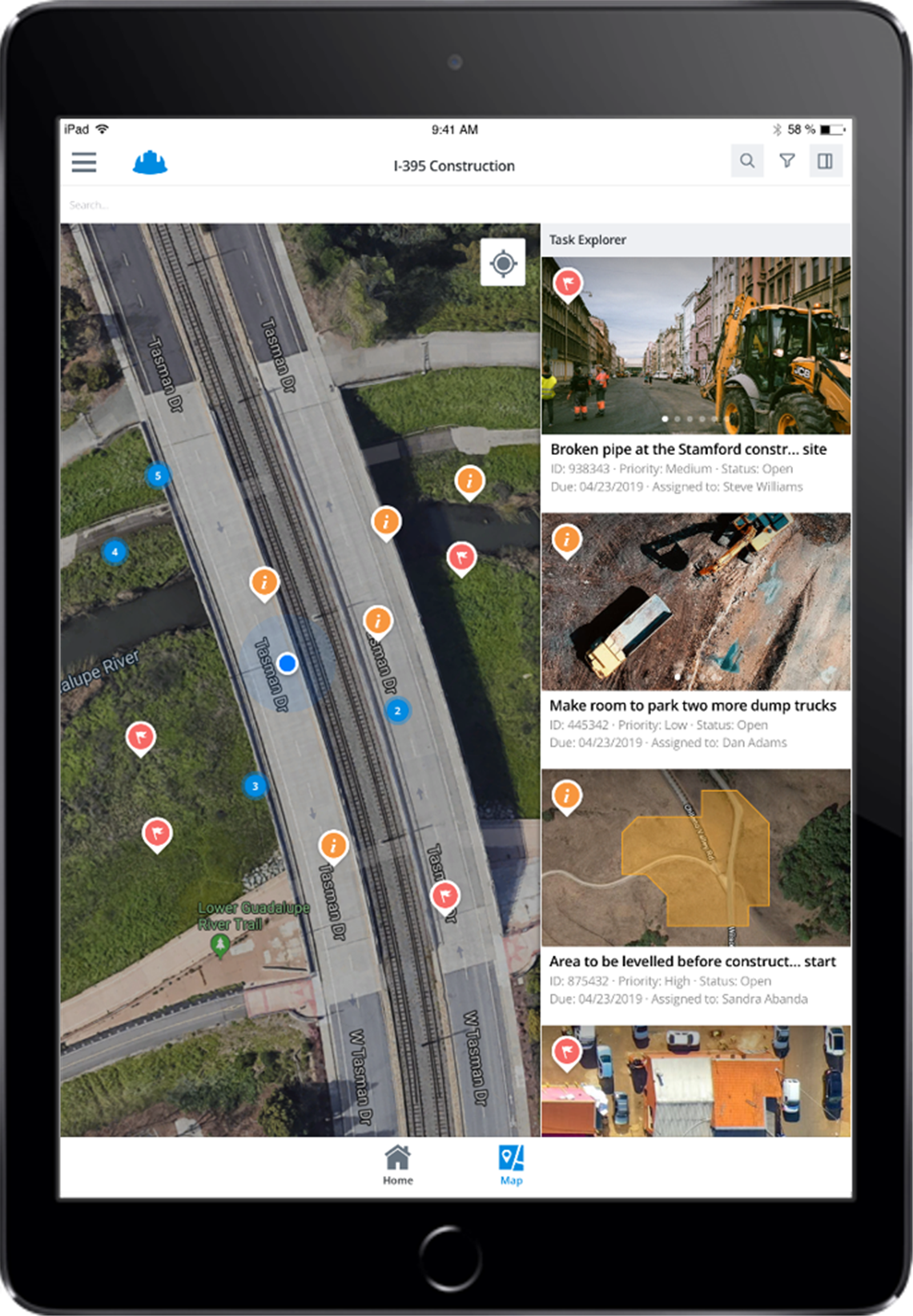 New technology has enabled digital mapping
New technology has enabled digital mapping
Using data can optimise production and increase productivity, such as the company’s Dynamic Tunnelling Package. By using the existing 3D CAD model of the project, the drill rig can create its own drill plan directly on the face of the tunnel. This enables a more flexible work process that saves time and delivers a very accurate result.
Another digital system being used by an OEM is Liebherr’s LIPOS, which equips the deep foundation specialists with a tool that simplifies the task. It was recently used on the construction of a new hospital in Austria, where the new building was being constructed close to the existing hospital and the available land required substantial foundation work.
Approximately 1,310 piles in an area of 23.000m² for the foundation of the building needed to be installed with a maximum depth of 16m. It was initially estimated that it would take four months to complete.
The drilling rig can be manoeuvred to each of the 1,310 drilling points without the need of any iron stakes or colour markings for orientation and the work was completed earlier than planned, after only three months, with the LIPOS positioning system said to be a key factor. Without this system the drilling points would have to be newly measured, drawn and marked at least three times a day.A Liebherr drilling rig type LB 28 equipped with the positioning system LIPOS was used. Once the complete building ground was measured and the position of each single pile was identified, the gathered data was transferred as a digital drilling plan to the LIPOS positioning system in the Liebherr machine. Jobsite data and pile lists for work to be carried out are transferred to the machine when the drilling list is uploaded.
Site manager Harald Fugger said, “The LIPOS positioning system is ideally suited for completing jobsites, especially using the CFA method. It has proven itself well on the jobsite and makes working processes easier, allowing continuous real time control and monitoring. Quality management is considerably improved through the automatic recording of the processes.”
What’s next for construction technology?
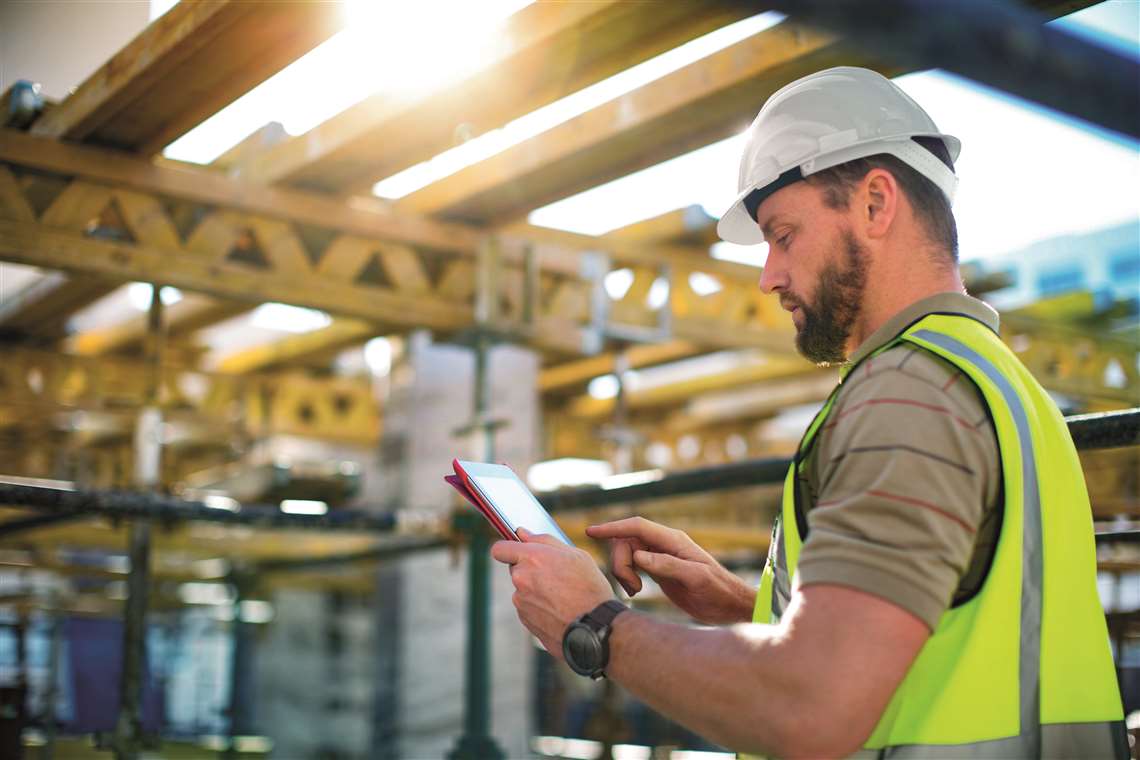 Digitisation can be as simple as using a tablet to record data rather than a pen and paper
Digitisation can be as simple as using a tablet to record data rather than a pen and paper
The digitalisation of the industry is occurring all the time, with digital twins being at the cutting-edge of this journey. In order for digital twins to further advance though Bentley’s Humphrey says that, “The reality is that data in the GIS or fit-for-purpose CAD/BIM tools is often siloed. Unless data can be aligned and synchronised, it will remain ‘dark data’ and any digital twin will not have veracity or fidelity. The platform for digital twins must be an open connected data environment.”
Bentley has stated that it is committed to the advancement of digital twins and has developed open sourced models to help, as well as joining the Digital Twin Consortium to help advance the industry. The need for data sharing is apparent, but it is clear that digital technology has the capacity to transform the industry.
As Topcon’s Box says, “The industry now has a real opportunity to evolve by embracing digital technology. Not only will investment in digitalisation deliver results almost immediately, it will also ensure businesses are better prepared to face whatever the future may bring.”
STAY CONNECTED



Receive the information you need when you need it through our world-leading magazines, newsletters and daily briefings.
CONNECT WITH THE TEAM








